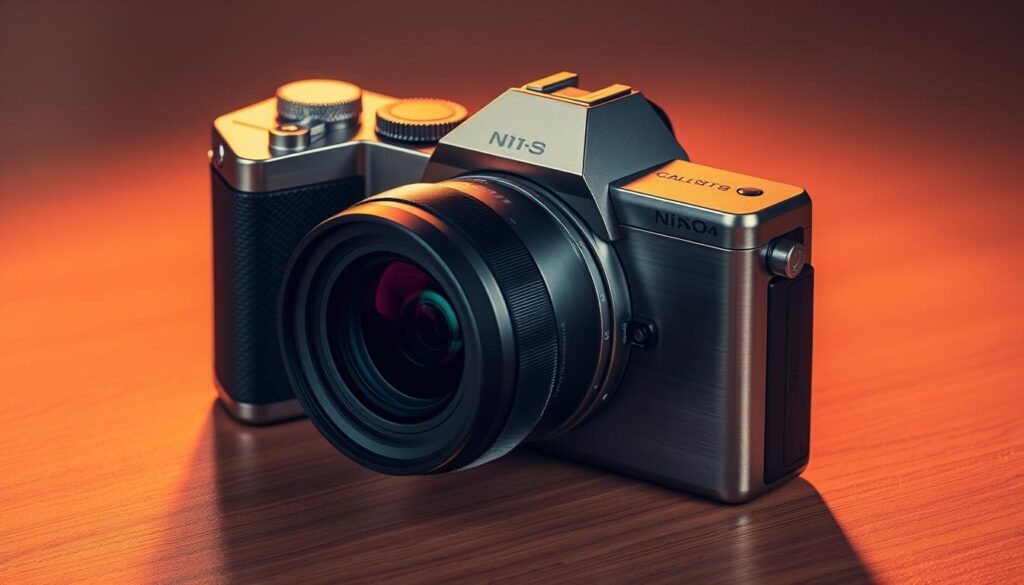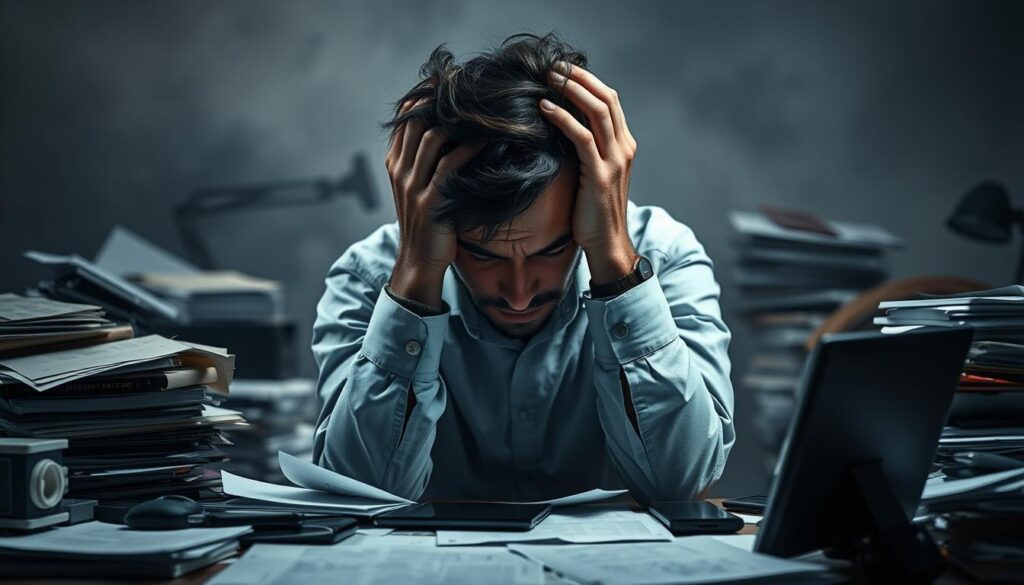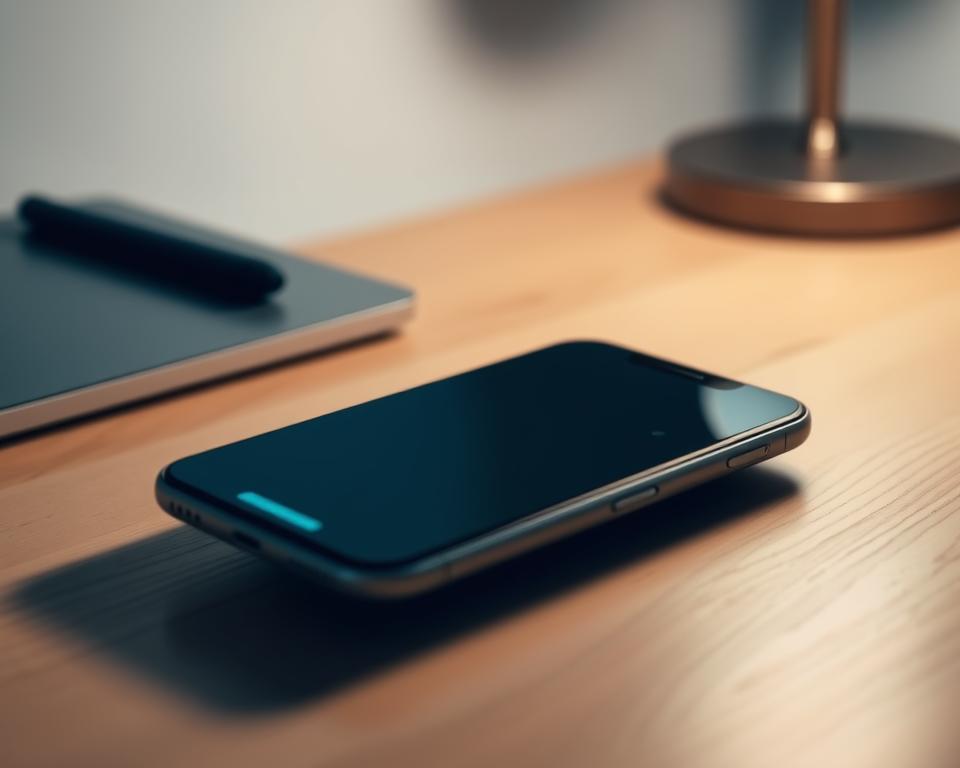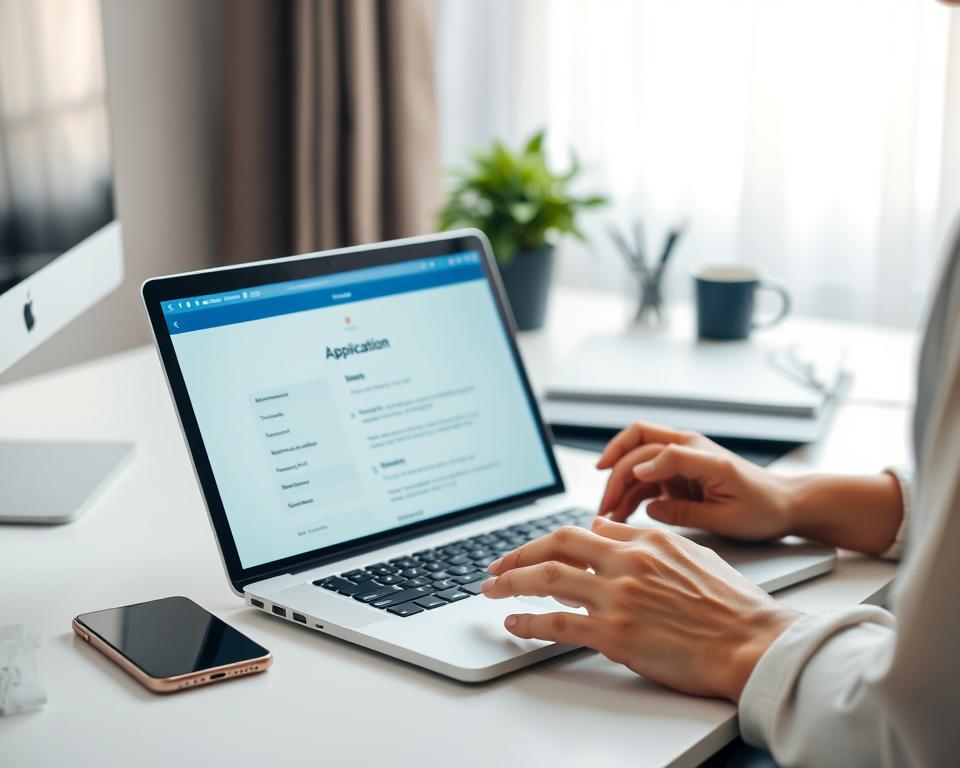Anuncios
What small tricks could change the way you use your device every day? That question matters because many people miss built-in powers that cut busywork and protect privacy.
When you tap a few hidden features, your phone becomes a true ally. From simple automation with Shortcuts, IFTTT or Tasker to recovery settings like Find My, these tools lift routine burdens and keep data safe.
You’ll also find handy utilities such as document scanning, screenshot markup, and voice typing. Productivity apps like Google Calendar, Todoist, Trello, and Asana pair well with cloud storage to keep work flowing.
Small moves—like using a keyboard cursor trick or muting nonessential alerts via Screen Time or Digital Wellbeing—save minutes and reduce interruptions.
In this guide, expect quick wins you can set up in minutes, clear steps to avoid common issues, and links to deeper tips like those on hidden Android features. By the end, you’ll know which features matter most and how to use them without extra fuss.
Conclusiones clave
- Unlock built-in features to make your device a practical everyday ally.
- Use automation and recovery tools for efficiency and safety.
- Try quick utilities like scanning, markup, and voice typing.
- Mute nonessential alerts to protect focus and wellbeing.
- Apply simple keyboard and navigation tricks to save time.
Why hidden smartphone features matter right now
Tuning hidden controls can shrink noise and give you back pockets of focused time. Phones blur work and life, and that constant pull raises stress. You can cut interruptions without losing what’s important.
Mute the small things and keep critical alerts. Use Screen Time on iOS or Digital Wellbeing on Android to silence nonessential notifications and restore focus. Built-in calendars and apps like Google Calendar or Outlook keep schedules in sync so you don’t miss the important stuff.
Task tools such as Todoist, Microsoft To Do, Trello, and Asana make priorities clear. Offline Google Maps reduces data usage when you travel. And the camera’s document-scan option helps you grab paperwork fast.
“When alerts, calendars, and lists work together, your day flows with less friction.”
- Trim digital noise so your phone surfaces what matters.
- Organize the home screen with widgets and smarter search for faster usage.
- Apply a few quick settings and reclaim minutes each day.
These tips save time and lower stress. Set them up once and enjoy a calmer, more useful device.
smartphone hacks: the quick-win list you’ll actually use
Little tweaks can turn routine gestures into time-savers you actually use every day.
iPhone highlights you might have missed
- Back Tap launches actions like Camera, screenshots, or the flashlight with a double or triple tap.
- Turn the space bar into a keyboard trackpad so you place the cursor precisely and cut edits.
- Enable QuickPath swipe typing and set text replacements to speed common phrases while typing.
- Use Magnifier for easier reading and Shortcuts to create custom app icons and automations.
Android gems hiding in plain sight
- Set Smart Lock for trusted places and use App pinning before lending the device to someone.
- Double-press the power button to open the camera instantly and recover alerts with Notification history.
- Try one-handed zoom in Chrome, Google Maps, and Photos for easier navigation with your thumb.
- On Pixel phones, explore the Personal Safety app for crash detection and discreet emergency sharing.
“These quick wins take minutes to enable, yet you’ll use them all day long.”
Productivity shortcuts that save you time every day
A couple of well-placed automations will shave minutes from your routines every single day. Start small and build habits that remove friction from common tasks. These steps let you focus on work, not busywork.
Automation with Shortcuts, IFTTT, and Tasker
Atajos chains actions on iOS so one tap sets Focus, opens notes, and plays a playlist. Use IFTTT to link apps like Calendar and Gmail to trigger reminders or change smart lights. On Android, Tasker runs deeper device actions based on location, Wi‑Fi, or time.
Calendar, reminders, and focus timers
Consolidate calendars with Google Calendar or Outlook and share lists in Todoist or Microsoft To Do. Add Pomodoro timers like Forest and time trackers such as Toggl to measure productive blocks.
Split-screen and fast app switching
Use split‑screen to reference files while you write and master quick app switching to shave seconds from every context change. These small moves compound into big gains across your devices each day.
Smarter navigation: offline maps, one-handed zoom, and faster camera access
Set up offline maps and one-handed gestures to keep moving without interruptions. These small tweaks help you navigate, check photos, and capture moments when service is unreliable or your hands are full.
Download Google Maps for offline use
Save map regions before you go so you can navigate without a connection. Downloading areas in Google Maps prevents extra data use and keeps directions working when coverage drops.
This is especially handy when you travel internationally or explore places with spotty service.
Zoom with one thumb in Maps and Photos
In Chrome, Google Maps, and Google Photos, try the double‑tap and hold, then slide your thumb to zoom. This gesture is fast and keeps your other hand free.
The trick helps you inspect details on the screen and confirm you captured the right photos without awkward pinches.
Double‑press power to open your camera instantly
On Android 11+ many phones let you double‑press the power button to launch the camera. It’s enabled by default on Pixels and many Samsung models.
Quick camera access means you won’t miss a moment—or critical details in an emergency. Keep transit and travel apps on your first screen for the fastest way to get where you’re going.
- Save map regions to avoid using mobile data.
- Use the one‑handed zoom gesture to review photos quickly.
- Quick camera launch helps in everyday and emergency situations.
- Teach family members these gestures so they can use shared phones confidently.
Camera and photo tricks that make your shots pop
Get sharper photos and clearer screenshots with a couple of built‑in tools and a tidy workflow. These quick settings help you capture, edit, and share without extra apps or fuss.

Back Tap shortcuts
Assign Back Tap on your iPhone to open the camera or grab a screenshot with a double or triple tap. It works through most cases and gets you to the viewfinder in an instant.
Use markup to highlight key info
Both iOS and Android include markup tools so you can circle text, add arrows, or redact sensitive details before sending. This turns a plain screenshot into a clear, actionable image.
- Set Back Tap to open Camera so your next shot is one tap away.
- Map Back Tap to take screenshots, then mark up with highlights and arrows.
- Use built‑in editing tools to brighten, straighten, and crop before sharing.
- Create a simple photo workflow: shoot, quick edit, save to a shared album for teammates or family.
“A quick markup saves long explanations—annotated visuals speed decisions.”
Consejo: Turn on grid lines and use the exposure slider for better composition and clearer indoor photos. Store edited photos in labeled albums so you can find assets fast.
Notifications, Do Not Disturb, and focus modes to cut the noise
Reduce daily noise by shaping which alerts can reach you and when they do. These small changes lower interruptions and give you predictable windows for work and rest.
Prioritize critical alerts and use Notification history
Decide which apps may interrupt you and set Focus or Do Not Disturb during heads‑down work. Allow only mission‑critical signals like calendar events or family messages to break through.
On Android 11+ turn on Notification history so dismissed alerts are recoverable if you swipe too fast.
Custom vibrations and quiet hours that protect your focus
Assign custom vibrations to VIP contacts so urgent calls are obvious without looking at the screen. Batch non‑urgent notifications into summaries to check later.
Use quiet hours at night to cut stress and improve sleep. Keep lock‑screen previews private to avoid visual distraction and protect sensitive info.
- Start by choosing which apps can interrupt you during work.
- Review notification permissions monthly—apps change, and so do your needs.
- Pair Focus modes with app limits to stop social or news feeds from leaking attention.
- Small, consistent settings changes give you more control over your phone and lower daily estrés.
“A quiet baseline helps the right alerts actually get your attention.”
Type faster with keyboard power moves
A few keyboard gestures speed up how you fix typos and compose messages. These features cut steps so you spend less time editing and more time saying what matters.
Turn the iPhone space bar into a trackpad. Press and hold the space bar to move the cursor precisely. This makes correcting a word or selecting text faster and steadier than multiple taps.
QuickPath and text replacements
Enable QuickPath to swipe through words and keep typing while you walk. Android keyboards offer similar swipe input in many default apps.
Create text replacements for emails, addresses, or common replies. A short code expands into a full phrase and saves repeated typing steps.
Voice typing when your hands are busy
Use voice typing in messaging and notes apps for long ideas or when your hands are full. Speak punctuation like “comma” or “period” to produce cleaner drafts.
- Practice the trackpad gesture a few times—it becomes second nature.
- Keep your personal dictionary updated so names and terms stop tripping autocorrect.
- Try third‑party keyboards for smarter suggestions while keeping privacy controls tight.
“Combine these moves and you’ll type with fewer interruptions and more clarity.”
For more advanced tips on keyboard gestures, check this quick guide from keyboard tricks and tips.
Customize your home screen like a pro
Make your home screen a daily dashboard that reflects how you actually work and rest. A simple layout speeds access and lowers distraction every time you unlock your device.
On iOS 14+ you can build custom app icons using shortcuts and hide originals in the App Library. This lets you create a unique look and try automations without losing the real app behind the scenes.
Custom icons are more than style. They introduce you to automation tools that run routines with a single tap.
Declutter your home screen with folders and search
Group related apps into folders and keep the first screen minimal—calendar, messaging, and maps make a clean start. Use the search bar for everything else so you avoid endless swiping.
- Match widgets to your routine for at‑a‑glance clarity.
- Try themed icon packs for a cohesive look.
- Revisit your layout monthly and remove apps you no longer use.
“A tidy first page cuts taps and helps you start focused.”
If you prefer services like Apple, this setup blends style with speed. Arrange your layout to reduce scrolling and keep your day moving.
Security and privacy boosts you can set up in minutes
Simple privacy tweaks make sharing your phone safe and recovery painless if you lose it.
Start with Smart Lock and app pinning. On Android, Smart Lock keeps your device unlocked at trusted places like home or the office so you don’t fight the lock screen all day. Use app pinning when you hand a device to someone — the pinned app stays open until you unlock with your passcode or biometrics.
Find My and fast recovery
Enable Find My on every phone you own. If a device goes missing, you can locate, ring, lock, or wipe it remotely. That peace of mind matters in an actual emergency.
Permissions, previews, and basic care
Audit app permissions and limit which apps access your data. Turn off lock‑screen previews for sensitive notifications so private info stays private.
- Set strong biometrics and a solid passcode as your first defense.
- Keep backups current so loss is an inconvenience, not a disaster.
- Teach family how to unpin and unlock so sharing is hassle‑free.
- When you use your phone in the car, pin a navigation or music app to keep things focused.
“Security takes minutes to set up and saves hours of worry—do this once and move confidently.”
Your smartphone as a wellness ally
Let your phone quietly log movement, sleep, and short mindfulness sessions so you can spot patterns over time. Built-in trackers like iPhone Health and Google Fit record steps and trends without extra effort.
Step tracking, sleep monitoring, and mindful breathing
Let step tracking run in the background to see daily movement and adjust routines. Pair sleep tracking—Sleep Cycle or native sleep tools—with a wind‑down routine and mindful breathing to improve rest quality.
Hydration and medication reminders that actually stick
Set hydration alerts with apps like WaterMinder or simple Calendar reminders. For meds, try MediSafe so dosing stays on time and adherence becomes routine.
Measure noise exposure and monitor heart rate
Use Apple’s Noise app or equivalents to catch unsafe decibel levels at concerts or work sites. Track resting heart rate with wearables or apps such as Cardiio to watch sudden changes.
- Keep essential health files in Apple Health or MyChart for quick access at appointments.
- Add five‑minute mindfulness breaks to your calendar; apps like Headspace and Insight Timer help guide you.
- Share records with your care team via patient portals or telehealth to save time.
“Treat your phone as a supportive ally that nudges you toward healthier defaults across your day.”
Control data usage and extend battery life
Small routines—like downloading on Wi‑Fi first and trimming background activity—make a big difference for both data and battery.
Download‑first habits and Wi‑Fi speed tests
Plan ahead: grab maps, podcasts, and playlists while on Wi‑Fi so cellular data stays for what you truly need.
Run a quick speed test before streaming or a video call to pick the best network. A stronger network avoids repeated retries and wasted usage.
Battery saver, brightness tweaks, and background app controls
Turn on Battery Saver and lower screen brightness to extend runtime. Limit background refresh for power‑hungry apps so they don’t drain charge or data quietly.
Practical steps:
- Make a download‑first habit: update apps and media on Wi‑Fi.
- Cache google maps offline areas so navigation works even with spotty network.
- Identify power‑hungry apps and restrict background activity or permissions.
- Schedule backups and large syncs to run on Wi‑Fi at night.
- Use dark mode on OLED screens and restart your phone occasionally to clear runaway processes.
Consejo extra: Keep a compact battery pack and a charger handy for long trips. If you face persistent battery issues, audit widgets and live wallpapers that may be causing performance or battery issues.
“A few simple steps cut data bills and add meaningful hours to your day.”
Files, storage, and recovery tips
Set a few simple rules for files and backups so small mistakes don’t become major headaches. Good habits make it easy to find receipts, warranties, and notes when you need them.
Recover deleted items and reclaim lost data
Check for a recycle bin on your Android device—many models keep deleted items for a limited time. If you accidentally remove a photo or document, the bin often makes recovery painless.
Scan, sync, and annotate for reliable backups
Use your camera or a scanning app to save paper receipts and documents as PDFs. Send scans straight to Google Drive or Dropbox so copies live on the cloud and across your devices.
Annotate screenshots and mark up photos before you archive them. Little arrows and notes make later searches faster and reduce follow‑up questions.
- Convert important web pages to PDFs for offline use and consistent formatting.
- Use clear file names and subfolders so retrieval is quick.
- Turn on automatic backup so a lost phone never means lost files.
“A few minutes of organization prevents hours of searching later.”
Essential safety features that have your back
Make essential emergency settings part of your routine so help can find you fast. A few minutes of setup ensures first responders and loved ones get the details they need without delay.
Emergency info on your lock screen
Add allergies, medications, and emergency contacts to your lock screen so responders can access critical data without unlocking your device.
Keep the details concise and update them when your care needs change. This small step helps in true emergencies.
Google’s Personal Safety app on Pixel phones
On Pixel phones, enable Personal Safety to detect serious car collisions and summon help automatically.
The app can notify emergency services, share your live location with trusted contacts, and quietly record events for context.
- Put emergency contacts and medical info on the lock screen so responders can act quickly.
- Enable Personal Safety on Pixel for car crash detection and automatic alerts.
- Practice using emergency features so you won’t hesitate under pressure.
- Share live location with trusted contacts when traveling or meeting someone new.
- Consider a discreet SOS trigger you can activate without unlocking the phone.
- Keep contact lists current so the right people receive alerts.
- Set these features for children or seniors who use phones in your care.
- Review local emergency numbers and default behaviors before you travel.
- Combine safety settings with strong device security for full protection.
- Safety readiness takes minutes and can save lives.
“A little preparation makes a huge difference when every second counts.”
Everyday controls that make life easier
Turn your phone into a single remote that manages lights, media, and thermostats. With a few quick setups, you can centralize common tasks and save time every day.
Use your phone as a remote for home devices
Install your TV and smart‑home apps so you can adjust lighting, temperature, and media from one place. Pin the most used controls to your first screen or quick settings for faster access.
- Set routines (morning, bedtime) to run multiple actions with one tap.
- Use voice assistants when handy, but review privacy settings regularly.
- Keep a small “home dashboard” folder for maintenance and utility apps.
Create a guest Wi‑Fi network to protect your home
Most modern routers let you add a separate guest network with its own password. This isolates visitors from your main devices and personal data.
- Share the guest network via QR code so friends connect quickly without exposing main credentials.
- Confirm router firmware is up to date and use unique passwords for each network.
- Set parental controls on streaming apps to keep profiles organized and kid‑friendly.
“With a few tweaks, daily home tasks become tap‑and‑go simple.”
Small hacks with big impact on stress
A few deliberate tweaks to app limits and layout can free up time for the things that matter. These adjustments cut friction and help your day feel calmer without a lot of effort.
App time limits and focused home screens
Set app time limits with Screen Time on iOS or Digital Wellbeing on Android to curb mindless scrolling. Add gentle limits so you can still use tools you need while reducing the parts of the day that drain energy.

Customize your home screen to surface essentials—calendar, tasks, and wellness apps—and hide tempting apps on a different page. Habit reminders and short timers reinforce healthier defaults and help you reclaim chunks of uninterrupted time.
- Add gentle app limits to constrain scrolling without blocking needed tools.
- Build a focused home screen that highlights tasks, calendar, and wellness tools.
- Schedule short breaks with reminders to reset focus and lower peaks of stress.
- Use blockers during deep work or sleep hours to protect attention.
- Pair limits with goals you care about—better rest, more reading, or regular workouts.
“A few small design choices on your screen can make life feel lighter, calmer, and more under control.”
Conclusión
A handful of thoughtful tweaks unlock the real potential of your device. Back Tap, Smart Lock, Notification history, one‑handed zoom, and Pixel’s Personal Safety show how small changes create big gains.
Pair these settings with calendars, task managers, cloud files, automation, and wellness tracking. That mix turns your phone into an everyday ally for work and hogar life.
Start with one or two simple tips—offline maps, tighter notifications, or a focused layout. Keep safety and shortcuts enabled and revisit privacy and battery settings monthly.
Use the smartphone hacks sparingly and make each change count. Small wins build momentum, and over time your setup becomes simpler, safer, and far more helpful.
Preguntas frecuentes
What are some hidden features you should start using on your phone?
Many devices include underused tools like gesture shortcuts, Back Tap (iPhone), Quick Settings tiles (Android), built-in screen recording, and one-handed zoom. Explore Settings > Accessibility and Settings > Gestures to enable them quickly.
Why do hidden features matter right now?
They save time, reduce frustration, and help you protect data and privacy without installing extra apps. Activating a few built-in options can improve battery life, speed up tasks, and cut down notifications so you stay focused.
What quick-win tips will I actually use every day?
Try these: enable Do Not Disturb during work hours, set text replacements for long phrases, use split-screen for multitasking (Android) or fast app switching (iPhone), and download offline maps for travel. Small changes add up fast.
What iPhone highlights might I have missed?
Look for Back Tap to trigger shortcuts, the space-bar trackpad for precise cursor control, Live Text to copy text from images, and Shortcuts automations for routine tasks like silencing at night.
Which Android features are hiding in plain sight?
Check Smart Lock for trusted places, app pinning to hand your device to someone safely, Quick Settings customization, picture-in-picture for video, and system-wide clipboard suggestions for faster typing.
How can automation tools save me time?
Use Shortcuts on iOS or Tasker/IFTTT on Android to automate tasks like turning on low-power mode at 20%, texting your ETA when you leave work, or launching navigation when you connect to your car’s Bluetooth.
What calendar, reminder, and focus tools actually help productivity?
Use calendar blocks for deep work, set location-based reminders, enable Focus modes (iOS) or Work profiles (Android), and add timers for Pomodoro-style sessions to protect short bursts of uninterrupted work.
How do I multitask with split-screen and fast app switching?
On Android, open Recent Apps and drag an app to the top to enable split-screen. On iPhone, use App Switcher gestures or drag from the bottom edge on iPadOS to run two apps side by side.
How do I download Google Maps for offline use?
Open Google Maps, search the area, tap the place name or three-dot menu, and choose Download offline map. This ensures navigation without mobile data in low-coverage areas.
How can I zoom with one thumb in Maps and Photos?
Use double-tap-and-drag: double-tap and keep your finger down, then slide up or down to zoom. It’s faster and steadier when you’re holding your device with one hand.
Is there a way to open the camera instantly?
Yes. On many phones double-press the power button to launch the camera. You can also use a back gesture like Back Tap on iPhone or assign a Quick Action on Android lock screens.
What camera and photo tricks make shots look better?
Use gridlines for composition, tap to lock focus and exposure, shoot in HDR for high-contrast scenes, and edit with built-in markup or photo tools to crop and enhance quickly.
How do I use markup to highlight info in screenshots?
After taking a screenshot, tap the preview to open markup. Use pen, highlighter, and text tools to circle or label key details before sharing or saving to cloud storage.
How can I reduce notification noise without missing important alerts?
Prioritize notifications in Settings, enable Notification History on Android, set custom app vibrations for priority contacts, and use Focus or Do Not Disturb with allowed exceptions for urgent calls.
What keyboard tips speed up typing?
Turn the iPhone space bar into a trackpad for cursor moves, enable QuickPath or Glide input for swiping words, set text replacements for common phrases, and use voice typing when your hands are busy.
How do I add Shortcuts-powered app icons on iOS?
Use the Shortcuts app to create a new shortcut that opens an app or action, then add it to your Home Screen. Custom icons and automation lets you tailor your layout and save taps.
What quick privacy and security boosts can I enable now?
Turn on Find My (iPhone) or Find My Device (Android), enable app permissions only when using the app, set up biometric unlock, and use Smart Lock or app pinning when sharing your device.
How can my phone help with wellness and stress management?
Use built-in health apps for step tracking and sleep logs, enable mindful breathing reminders, set app time limits, and create focused home screens to reduce temptation during work or downtime.
What settings extend battery life and control data use?
Enable battery saver modes, lower screen brightness, restrict background app refresh, and use Wi‑Fi whenever possible. Run periodic Wi‑Fi speed tests and download large files over Wi‑Fi to save mobile data.
How do I recover deleted files or scan documents quickly?
Check the Photos or Files app “Recently Deleted” folder to restore items. Use your camera’s document scan mode or Google Drive/Notes scanner to capture documents and sync them to cloud storage for safekeeping.
What essential safety features should I set up?
Add emergency medical info to your lock screen, register emergency contacts, and install Google’s Personal Safety app on Pixel phones for crash detection and emergency sharing where available.
Can my device act as a remote for home gadgets?
Yes. Use apps like Google Home, Apple Home, or manufacturer apps to control TVs, smart lights, thermostats, and cameras. Set routines to trigger multiple devices at once for convenience.
How do app time limits and focused home screens reduce stress?
Set daily limits for distracting apps, enable Downtime or Focus to hide nonessential icons, and create a minimal home screen for work hours to keep your attention on priorities.



